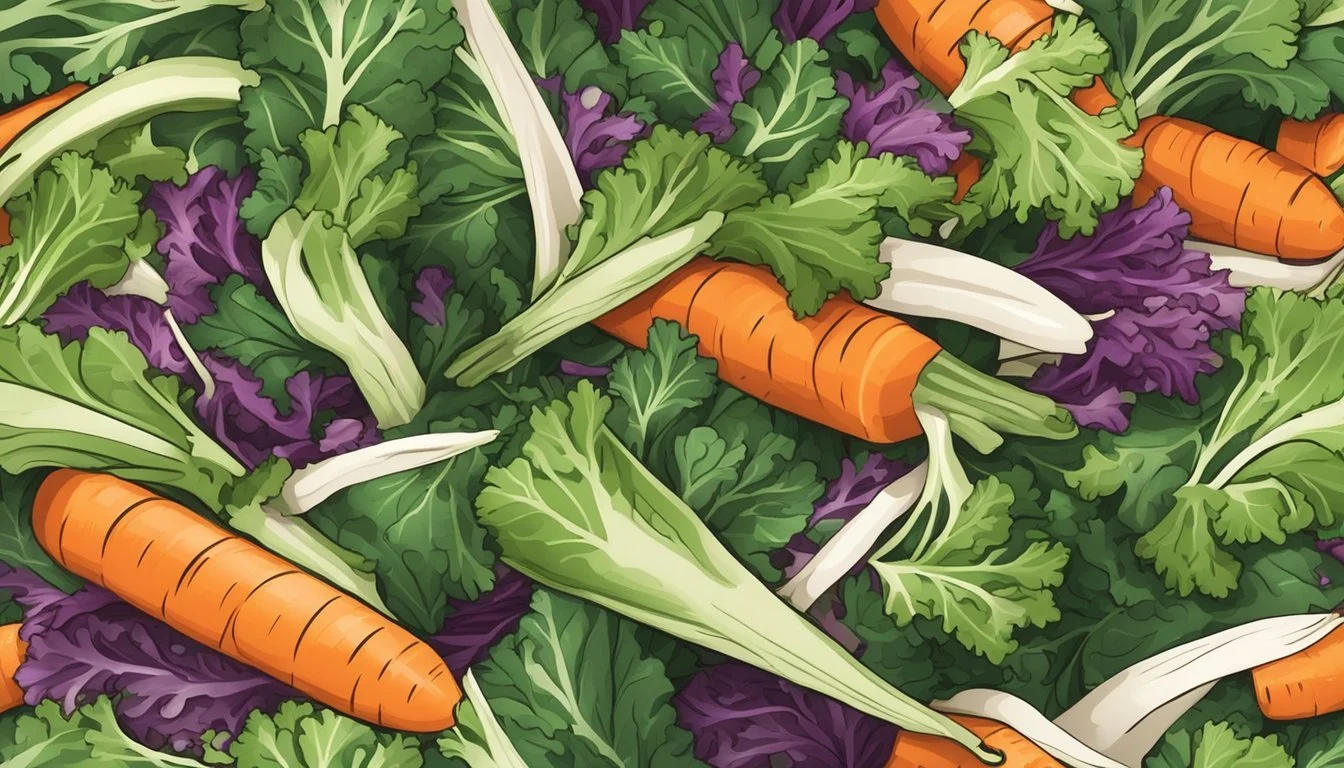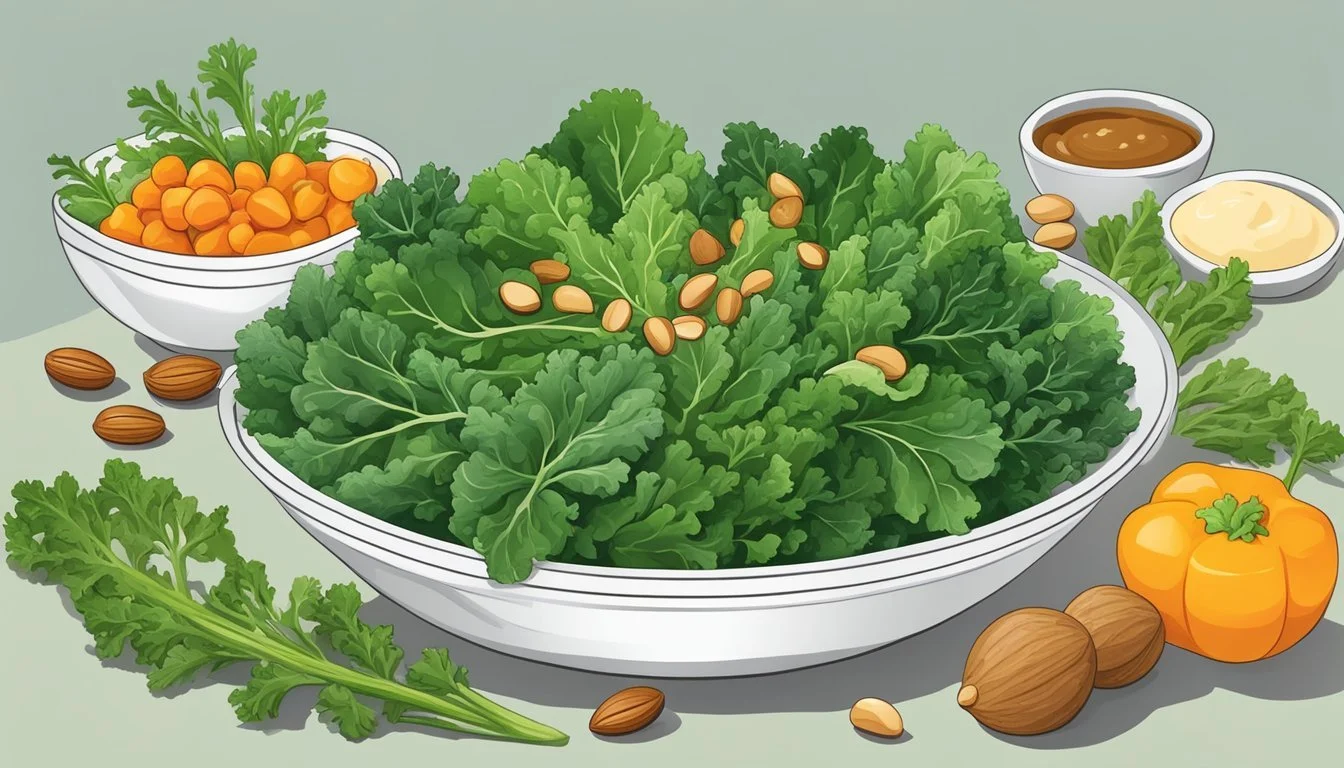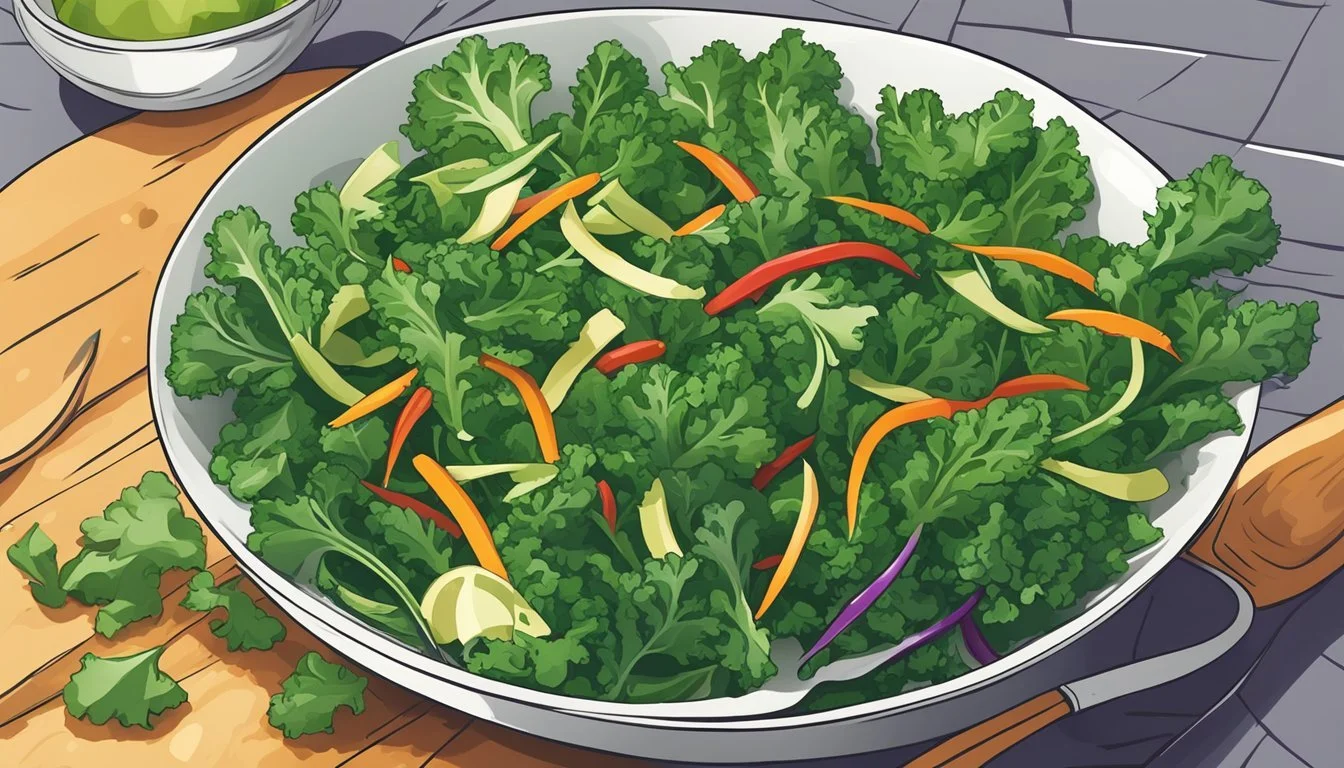Kale Stem Slaw
A Hearty, Nutrient-Dense Side Dish Unveiled
Kale (What wine goes well with kale?) stem slaw is a testament to the concept of using the whole vegetable, turning what is often discarded into a star ingredient. Traditional coleslaws are beloved for their crunch and tangy dressing, but this kale stem variant reinvents the classic side by incorporating the hearty texture of kale stems. The robustness of the stems provides a satisfying chew, while also being a potent source of fiber and nutrients.
By slicing the kale stems thinly and combining them with a mix of other vegetables such as carrots or cabbage, the slaw achieves a balance of flavors and textures. The vinaigrette or creamy dressing, often featuring ingredients like olive oil, vinegar, mustard, and perhaps a hint of sweetness with maple syrup or honey, melds together the diverse components into a coherent and delicious dish.
Kale stem slaw not only elevates the overall dining experience with its unique composition but also aligns with sustainable kitchen practices. It challenges the norm of food waste by showcasing how every part of a vegetable can be transformed into a delightfully refreshing and healthful side dish.
Kale: The Superfood Base
Kale serves as the foundation for a hearty stem slaw, lauded for its nutrient density and versatile culinary applications. As a superfood, it is abundant in essential vitamins and minerals. Curly kale and its cousin, lacinato, often referred to as "dinosaur kale," are popular varieties. They boast vibrant green leaves that are not only a feast for the eyes but packed with nutrition.
Nutritional Profile of Raw Kale (per 1 cup):
Vitamins: High in vitamin A & vitamin C
Minerals: Rich in calcium & iron
Other: Loaded with antioxidants
When it comes to nutrients per calorie, kale is hard to beat. It delivers a wealth of vitamins A and C, crucial for immune function and skin health, respectively. Additionally, its calcium content supports bone health, while iron is vital for blood function.
Antioxidants are another key component of kale's profile. These substances help combat oxidative stress and may contribute to overall health. Kale leaves contain various antioxidants, including flavonoids and polyphenols, which are important for a healthy diet.
A single serving of raw kale is a powerhouse, low in calories but high in voluminous fiber, aiding in digestion and adding a satisfying crunch to dishes like kale stem slaw. It’s this combination of low calorie content and high nutrient density that affirms kale’s status as a nutritious superfood ideal for a healthy diet.
Nutritional Profile of Kale Slaw
Kale slaw is distinguished by its dense concentration of nutrients and the balance of vitamins, minerals, and macronutrients it offers. It stands out as a versatile side dish suitable for many dietary preferences, including vegan, vegetarian, and gluten-free diets.
Vitamins and Minerals
Kale, the primary ingredient in kale slaw, is exceptionally rich in vitamins A, K, and C, which are crucial for maintaining healthy vision, blood clotting, and immune system function, respectively. It also provides a good source of calcium, beneficial for bone health, and potassium, which is important for heart health. Additionally, kale contains notable amounts of iron, a key component in the formation of red blood cells.
Vitamin A: Important for vision and immune function.
Vitamin K: Essential for blood coagulation and bone metabolism.
Vitamin C: Supports immune health and collagen synthesis.
Calcium: Crucial for bone strength and function.
Potassium: Helps regulate heart function and fluid balance.
Iron: Vital for oxygen transportation in the blood.
Macronutrients
Kale slaw is naturally low in carbohydrates, fat, and sugar, making it a suitable addition to various diets. It contains fiber, which aids in digestion and prolongs satiety. The addition of olive oil introduces healthy fats, specifically monounsaturated fats, which can help improve heart health. The protein content in kale contributes to muscle repair and growth. Kale slaw can thus provide a balanced spectrum of macronutrients.
Carbohydrates: Low, primarily from the kale and any additional slaw ingredients.
Fat: Healthy fats from olive oil, low in saturated fat.
Protein: Present in modest amounts, contributing to tissue repair.
Fiber: High in kale, supports digestive health.
Health Benefits
As a nutrient-dense food, kale slaw offers numerous health advantages. Fiber-rich foods, like kale slaw, can aid in regulating blood sugar and cholesterol levels, potentially reducing the risk of type 2 diabetes and heart disease. The antioxidants in kale, including various vitamins and polyphenols, protect the body from oxidative stress and may decrease inflammation. A dietitian (RD) might recommend kale slaw as part of a healthy, balanced diet due to its potential to promote general well-being and offer essential nutrients with minimal calories.
Fibers: Positively impact digestive health and metabolic processes.
Antioxidants: Protect cells from oxidative damage and reduce inflammation.
Nutrient Density: Provides essential nutrients without excessive calories.
Preparing the Ingredients
In crafting Kale Stem Slaw, meticulous preparation of the ingredients is essential to ensure a balance of flavors and textures. Careful attention will be paid to washing and conditioning the kale, achieving an optimal crunch, and crafting a harmonious dressing that complements the robustness of the slaw.
Handling Kale
Fresh kale must be washed thoroughly to remove any dirt or residue. Gently rubbing the leaves under cold water can do the trick. If the kale is particularly tough, soaking it in water for a few minutes might help to tenderize it. The kale stems, often discarded, are a source of crunch and nutrients; thus, they should be retained. To prepare kale, strip the leaves from the ribs, then chop the kale and stems finely—this will help the leaves wilt slightly, making them more palatable in the slaw.
Creating the Perfect Texture
For a crunchy element in the slaw, additional vegetables like apple, red cabbage, and carrots are included. Apples should be thinly sliced or julienned to match the size of the kale pieces, while a mandolin can be used for precise and uniform slices. Carrots and cabbage should be grated or finely chopped, adding not only texture but also vibrant color to the dish.
Dressing and Flavorings
The dressing should complement the hearty nature of the slaw without overpowering it. A vinaigrette made with extra virgin olive oil, apple cider vinegar, a touch of honey or maple syrup, and a zesty element like lemon juice or Dijon mustard is ideal. It should be whisked together until emulsified. Freshly ground black pepper and kosher salt enhance flavor depth. For a touch of herby freshness, finely chopped sage can be sprinkled in. The components are tossed until each piece is coated, marrying the flavors harmoniously.
Composing the Slaw
Creating a kale stem slaw involves combining various ingredients to achieve a hearty texture and a balance of flavors. This side dish can complement a range of main dishes and can be customized with optional add-ins to suit different dietary needs and preferences.
Combining Components
The base of the slaw consists primarily of finely chopped kale stems, which provide a crunchy texture and a wealth of nutrients. Complementing the kale, shredded carrots and apple add a colorful contrast and a subtle sweetness. To ensure even distribution, ingredients should be tossed together in a large bowl until thoroughly mixed.
Balancing Flavors
The key to a delightful kale stem slaw lies in the dressing, which balances tartness, sweetness, and a savory undertone. A simple dressing can be made with:
Olive oil or mayonnaise for richness
Lemon juice or apple cider vinegar for acidity
Honey or sugar for sweetness
Salt and freshly ground pepper for seasoning
Minced garlic or red onion for a pungent kick
Each ingredient should be carefully measured and whisked together. The dressing is then poured over the slaw and tossed until the components are well-coated.
Optional Add-Ins
For those seeking extra protein or variety, there are numerous add-ins that can elevate the slaw:
Protein Options:
Tofu (cubed and grilled)
Grilled chicken strips
Flaked salmon
Additional Toppings:
Sliced avocado
Crunchy pepitas or sunflower seeds
Diced granny smith apple for extra tartness
One can customize the final dish to be vegan by using plant-based mayonnaise or oil in lieu of traditional mayonnaise. To enhance the heat, a sprinkle of red pepper flakes can be added..integration






